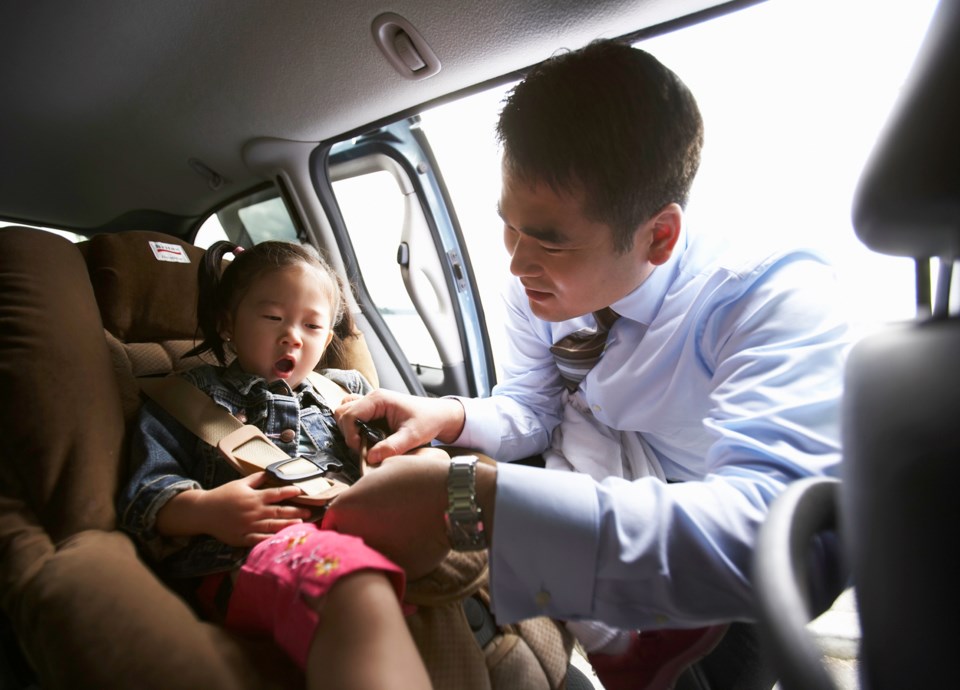That sudden blast of great weather had me taking off my jacket for the first time this year while driving around town last week. It also reminded me that the inside of a vehicle can warm up way faster than the environment outside.
So it’s probably time already to talk about the need to protect our kids from the problems of the extreme heat that builds up inside your car during our warmer months. Protecting pets is also very important, but there will no doubt be several reports about furry friends being left inside overheated vehicles in the months to come — as there always is. Today is about kids.
North America-wide, about 38 children die each year from being left in an overheated vehicle. They are tragic circumstances beyond imagination. Why does it happen?
Contrary to popular opinion, it is not about ignorant, unmindful or negligent parents or caregivers.
More often it is about real life — the things all of us must contend with in our complicated and busy world today.
In-car heat deaths happen for three main reasons.
The first one is what psychologists call “Forgotten Child Syndrome.” This happens because the parent is mentally overwhelmed while multitasking — doing the shopping, running errands or rushing to appointments.
It can also happen because of a change of routine. One parent usually does drop-offs but can’t one day, so the other parent unfamiliar with that routine takes over and forgets, busy with their own priorities.
Though I’ve never forgotten a child, I’ve been guilty of leaving coffee cups, thermoses, sports equipment and even a briefcase on the roof of the car, then driving off during similar moments.
Another scenario happens when children manage to get into an unlocked car without an adult noticing and get inadvertently locked in.
Finally, there’s the one where children manage to get inside a vehicle all on their own and then are unable to get out.
During hot days, when the outside temperature is around 25 to 30 C, the inside of a car can easily reach 55 C in 12 to 15 minutes. As a comparison, during the heat dome of June 2021 here on the lower Island, the temperature around our own place was 40 C, which was unbearable. That same heat dome killed 619 people in B.C. according to the coroner’s service — none of whom, to my knowledge, were trapped inside vehicles.
The easiest way to prevent these tragedies from happening is to never leave a child unattended in a vehicle, regardless of the temperature, bearing in mind that an older child is not a responsible caregiver.
Beyond that, there are three methods to ensure our kids are safe from an overheated car - the ACT principle.
“A” means avoid heatstroke from the start. Scan the inside of your car before leaving it. Make sure you have your keys in hand and lock up, even if the vehicle is in your garage or driveway.
“C” is for creating reminders that your child is with you. It can be leaving a toy on your front seat or putting something important like a wallet, purse or shopping list in the back seat near the tiny passenger, forcing you to look back there upon arrival.
“T” means to take action if you see something. This applies whether or not your own child is involved. If you see a child inside a hot vehicle, first see if they are responsive. If they are not, seek help right away.
If there is no caregiver around, call 911 immediately. If the child is in obvious distress, go to the window furthest away from where they are sitting and smash it out. This is a “Good Samaritan” action where you cannot be charged with anything as you have no criminal intent. Cool the child down with a spray or cloth until help arrives.
The message here is that extreme heat kills — quickly. Developing a hot-weather mindset as well as a standard routine during summer driving are the best ways to protect our precious little ones during summer heat.
Glove Box: I’ve recently noticed a better idea about helping pedestrians cross at intersections. Saanich has a system at some of their traffic-light intersections where the pedestrian “walk” signal comes on several seconds before the green light for vehicle traffic. That’s a very effective idea. Pedestrians move out into the crosswalk first, giving drivers a much better chance to see them during a right or left turn because vehicles are held back for a few seconds by the red light. It also helps to keep the crosswalk clear from those pedestrians who always go by the countdown signal — ignoring the actual “Don’t Walk” sign right beside it. More intersections around here should operate that way.



